The computer made in Vaud
In the age of smartphones, do we still know that in Switzerland we were creating “smart” keyboards as early as the mid-1970s? The Smaky (for “smart keyboard”), a microcomputer designed for education and sold in French-speaking Switzerland until 1998, was a beautiful and rich adventure.
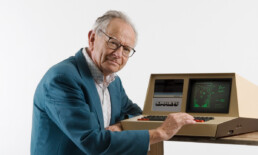
It was obvious to open this blog with some elements elements of Smaky’s history. I took the opportunity to meet the Smaky’s father, Professor Jean-Daniel Nicoud, who has always been looking for the ideal machine to explain computers to our children.
The arrival of the microprocessor in 1971 revolutionized computing. This central element, the “heart” of the machine, allowed hackers to dream of affordable and reasonably sized computers. In the mid-1970s, projects around the microprocessor were spreading around the world. In the United States in particular, the fledgling Silicon Valley was in turmoil and many new companies were created: Microsoft in 1975 and Apple the following year.
At that time, schools were sometimes equipped with a mini-computer, which was expensive, bulky and difficult to access: at the EPFL, the Nova mini-computer from the Digital Calculator Laboratory (LCD) was worth USD 20,000 dollars. A way had to be found to give students access to the computer and its peripherals (hard disk, printer). Among the LCD projects, led by Professor Jean-Daniel Nicoud, I would like to mention René Sommer’s Novasim project, which allowed ten students to use the Nova in parallel… while also dividing by ten the available memory of 4 kilobytes, or several million times less than a current computer!
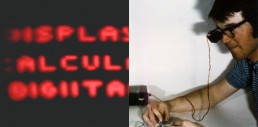
In 1974, impressed by the first developments made in the EPFL laboratory (Microleru punched tape mini-reader, DILU viewing glasses, miniature printer, etc.), Gordon Bell, Digital Equipment’s Technical Director, invited Jean-Daniel Nicoud to Maynard, near Boston, to work on a micro-computer project. All the conditions were met: “We were technologically mature. The microprocessor was coming, I was in the United States, I had contacts with component manufacturers and a partner for the software. Smaky’s concept was clear, he just had to get it to something usable,” recalls the professor. Back in Switzerland in 1975, the project continued, funded by Digital Equipment and the Zurich ETHZ, which needed graphics terminals for a PDP-11 computer. In the end, 20 copies of the Smaky 4 were built by hand. The first Swiss microcomputer was born, several months before the first comparable American microcomputers (motherboard, keyboard and graphics display).
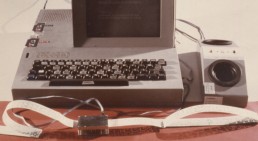
But the adventure has only just begun. While the number 5 had been renamed to Bobst Graphic Scrib and had become a mobile phone for journalists (I will certainly tell the story of the Scrib in a future article), the Smaky 6 was born in 1978. It was on request from Raymond Morel, from Calvin College in Geneva, that the LCD, soon to be renamed the Microcomputer Laboratory (LAMI), designed a machine that was very advanced for the time. Based on the Zilog Z80 microprocessor, the Smaky 6 was also one of the first microcomputers installed in a network. To market the product, the company Epsitec was created with Cathi Nicoud, Professor Nicoud’s wife, at its head.
Sometimes system D would take over. A handicraft teacher from Pully College, Yvan Dutoit, built all the metal boxes in his spare time, while André Thalmann had the pleasure of finding faults in the Smaky breakdowns, free of charge. René Sommer intervened during the development, says Professor Nicoud: “He lived with me, but I didn’t pay him… It was great, there was such freedom! Since we were in the wind, no one reacted, very few were jealous.” Since the early 1980s, the Smaky’s have continued to evolve. The first mice, a powerful operating system, software with a high educational value and documentation in French: the Swiss brand rivaled IBM and Macintosh compatible computers.
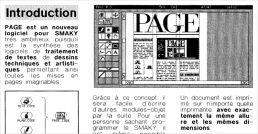
So, with such an energetic team and state-of-the-art computers, why didn’t the Smakys sell more widely and why didn’t Epsitec become a the Swiss Apple? Those are questions that come up repeatedly when I tell this story to visitors in Musée Bolo.
On the LAMI side, the objective was clearly not commercial. Professor Nicoud was interested in new technologies and his students were primarily attracted to research. “The spirit was not at all the same as it is today, where students are pushed into creating a startup with anything.” At Epsitec, we tried to place Smaky in schools, to continue the collaboration with teachers we knew. The advertisement, although imaginative and dynamic, like the caravan converted into a mobile demonstration room by David Besuchet, remained local. Professor Nicoud goes further: “If someone had approached Epsitec to spread Smaky more widely, it would have been catastrophic. With a salesman to tell them what to do, the team would’ve been demotivated in no time.” In 1986, when the Smaky 100 is challenged by the Macintosh, it’s hard to find the arguments. Cantons and towns that are considering widespread computerisation find it difficult to trust a small company in the region, “especially as it was run by a woman…”
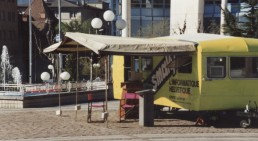
During 20 years, until 1998, 4’500 Smaky were sold. While the Smaky continues to live via an emulator under Windows, Epsitec now markets software for PCs, notably the management software Crésus.
At the end of the interview, Jean-Daniel Nicoud shows me a small Arduino electronic assembly he has prepared, with a simple display and lights that light up. His goal? To help solve the problem of teaching in colleges, to transmit computer culture based on the understanding of the microprocessor. Kind of like 40 years ago, with the first Smaky.
From Yves Bolognini
All of Smaky’s models, including prototypes, are on display at Musée Bolo at the EPFL.
A history of computing in Switzerland
The evolution of computing is very fast, and it is too easy to forget. On this site, you will discover the history of developments in Switzerland from the 70s. The name of the site, «smaky.ch», is borrowed from one of the symbols of Swiss computing, the Smaky computer developed in collaboration with the EPFL and marketed by the company Epsitec.
